Cattle Feed Prices on the Rise
Cattle feed prices have been on the rise in 2021, with no relief in sight for weary cattle farmers. Drought, high crop prices, supply chain disruptions, and the ongoing covid pandemic have combined to create significantly higher costs for cattle feed. Cattle feeders expect the impact to grow as we enter the winter-feeding season when homesteaders and farmers rely more heavily on feed rations. This can be more of an issue for farmers who raise their cattle for beef, as they must keep the animals gaining weight before slaughter. Beef cattle must eat 2 percent of their body weight in dry matter daily, which is roughly 24 pounds of food for the average-sized beef cow. Dairy cows consume between 2 and 2.5 pounds of hay per day for every 100 pounds of body weight.
Some homesteaders and small dairy farmers may face the difficult decision of culling their herds because they cannot afford the steep cattle feed prices through the winter. A local raw dairy near our homestead had to dip into their savings to pay for feed. Times are tough and the uncertainty can pose real challenges to homesteaders and small dairy farmers across the country.
Covid wreaks havoc on cattle feed prices
When most of the world came to a standstill in late March 2020, it threw the global supply chain into freefall. Factories closed. Workers became ill and were unable to report to their jobs. Consumers launched into a panic-buying mode, hoarding everything from toilet paper to meat and dairy products. The pandemic affected all sectors of the cattle industry, according to an in-depth report from two economics professors. “Beef Cattle Markets and COVID-19” takes a deep dive into how the coronavirus disrupted the cattle industry along with every market.
Before covid hit, the 2020 USDA Livestock Outlook report forecasted average 2020 feeder cattle prices of $146 per hundredweight. The pricing reflected a slight increase from the previous year’s rate of $142.23. The pandemic completely upended those predictions, driving demand higher for ground beef. Cull-cow pricing rose from $52 per hundredweight to $65.
The report projects cattle feed prices to remain high for 2022 in comparison with costs for the last five years.
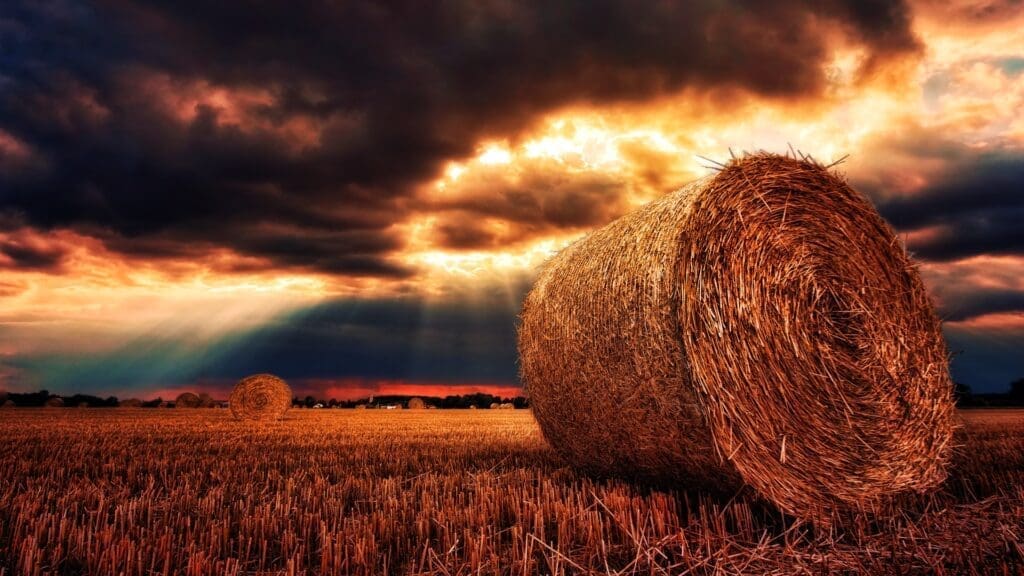
Cattle feed prices and the supply chain
Global supply chain bottlenecks continue to muck up the worldwide marketplace, including cattle feed suppliers. The pandemic challenged the supply chain, causing disruptions that still have not eased 20 months later. Ripple effects pulsed through the agricultural industry, triggering both domestic and international supply chain interruptions. According to the American Feed Industry Association, several factors combined to worsen the situation:
- Stockpiling of goods, including animal food.
- Shortages of essential feed ingredients.
- Labor shortages.
- Feed additive price increases.
Supply chains remain a concern until 2022. Ports struggle to keep up with the loading and unloading of goods, causing backlogs in getting products to the marketplace. High freight rates and shipping container shortages only add to the stress of an already struggling supply chain. The cost of a shipping container has more than tripled in the last year, causing delays in shipping and lost profits. Turnaround times for shipping containers also increased by 20 percent, further compounding the supply chain backlog.
Drought reduces crops, drives prices higher
High feed prices cannot be blamed on covid alone. Drier weather patterns, combined with wildfires in farming regions of both California and Oregon, made growing conditions more difficult for farmers over the last year. The Klamath Basin along the California-Oregon border experienced historic drought conditions. The result is higher prices for alfalfa, corn, hay, soybeans, and other feed grains in the marketplace. Alfalfa hay prices reached a national average increase of 20.5 percent over the last year, according to the USDA. States that saw the biggest price jumps:
- Pennsylvania – $253 per ton
- New Mexico – $240 per ton
- Colorado – $225 per ton
- Oregon – $220 per ton
Nebraska had the lowest price per ton for alfalfa hay at $145, followed by Missouri at $155 and North Dakota at $164.
We live in the high desert of northern New Mexico, where green fields do not exist and there is a lack of natural water. We supplement with alfalfa hay, so these steep price increases have hit us hard this year.
Labor shortages hit agriculture industry
The supply chain transportation squeeze affects more than ports of entry. Railroads have restricted shipping because of container backlogs in their rail yards. Truck drivers are in short supply, significantly slowing the moving of products from railyards and shipping ports.
Labor shortages are nothing new for the U.S. agriculture industry. The covid pandemic took an issue already in the forefront and exacerbated it. According to the U.S. Department of Agriculture, the animal food industry continues to struggle to fill open positions in manufacturing facilities with skilled workers.
Inflation’s role on cattle feed pricing
U.S. inflation rates continue to surge, up 6.2 percent in October. It is the highest rate of inflation the nation has experienced since November 1990. Inflation rates remain much faster than the 2 percent annual gains for which the U.S. Federal Reserve aims. Economists originally estimated that inflation would moderate by the end of 2021. It has not met those expectations. Instead, it jumped by 0.9 percent between September and October.
It is a vicious cycle for cattle farmers. As the prices for cattle feed and other necessities rise, farmers must pass along those increases to consumers in the form of higher prices for beef and dairy products.
Blaming the ongoing rise in inflation on the pandemic may be shortsighted because price increases have spread beyond pandemic-disrupted categories like electronics. Labor shortages continue to fuel hourly wage increases, which may prompt retailers and other businesses to raise their prices. How the fed plans to react if this trend continues remains to be seen.
Farmers make tough choices
It is difficult to predict what will happen moving forward, but the sad reality is, many beef and dairy farmers may not make it if their operational costs exceed their profit margins. A mild winter might help by lessening the number of supplemental feed farmers must buy. There are some other steps farmers have taken to help lessen their feed costs. Culling their marginal livestock is one of the more drastic moves some have chosen in the drought-stricken states. Data compiled by the U.S. Department of Agriculture reveals an alarming number of livestock slaughters in 2021. The problem with culling the herd to counter the high cost of cattle feed is smaller herds drive a bullish market.
Other farmers have taken less drastic extremes, blending alfalfa hay with other types of straw, and using protein supplements to make up for any nutritional deficiencies. This kind of blending can help reduce waste while helping cattle feed stretch farther. Before taking such drastic measures, we highly recommend consulting with a cattle nutritionist to ensure your beef and dairy cows have the nutrition they need to stay healthy. Otherwise, losses can be even higher if cattle become sickly because of nutritional deficiencies.
Consumers feel the pinch
Farmers are not the only ones feeling the pinch of higher cattle feed prices. Consumers have surely noticed the price of beef and milk has risen in the last year. Beef saw the steepest increases at around 20.1 percent between October 2020 and October 2021, according to data released by the U.S. Bureau of Labor Statistics (BLS). In comparison, milk rose by just half a percent over the last year.
It is difficult to predict what will happen moving forward, but the sad reality is, many beef and dairy farmers may not make it if their operational costs exceed their profit margins. A mild winter might help by lessening the number of supplemental feed farmers must buy.
Unfortunately, there is a lot of economic uncertainty relating to inflation, interest rates, logistics, and spending moving forward. For now, it looks like farmers and homesteaders can expect high feed prices to remain through at least the spring of 2022.
In our kitchen, we only use cultures from Cultures for Health.
Get yours here and start culturing today.
Popular Articles
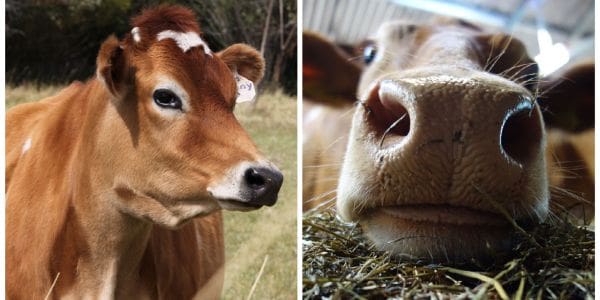
Jersey vs. Guernsey Cows: What’s the Difference?
Newsletter
Get signed up to get latest updates and new information from the Jersey Milk Cow!
This site uses Akismet to reduce spam. Learn how your comment data is processed.

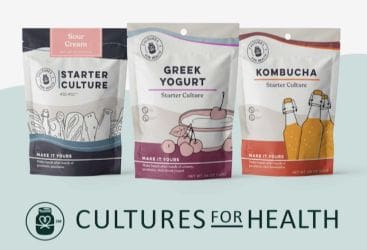
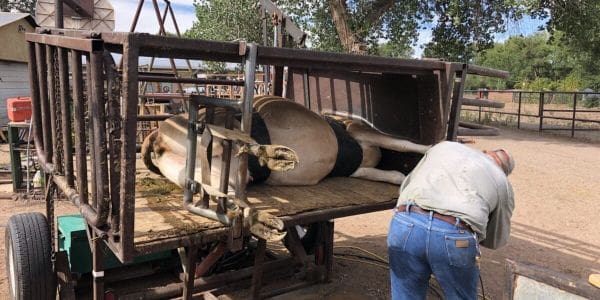



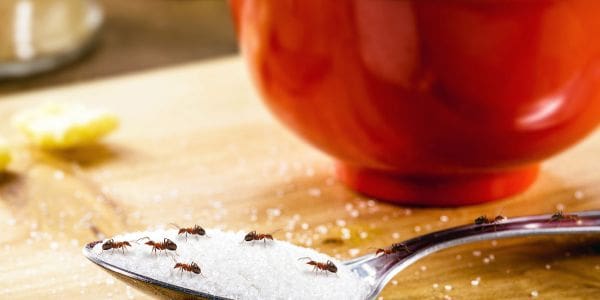



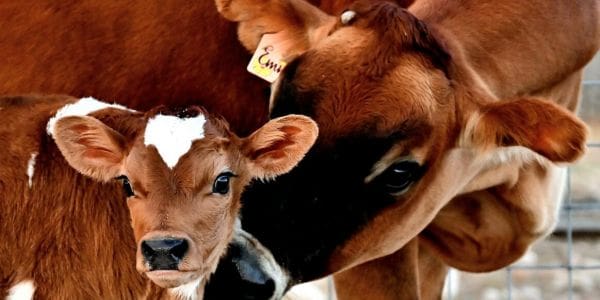
Leave a Reply